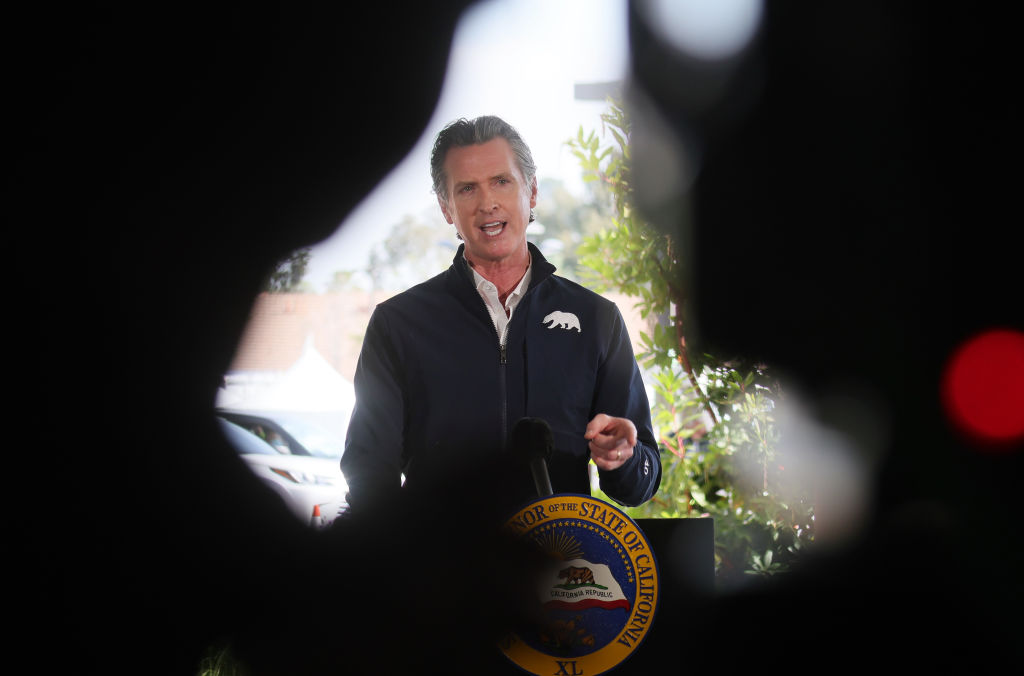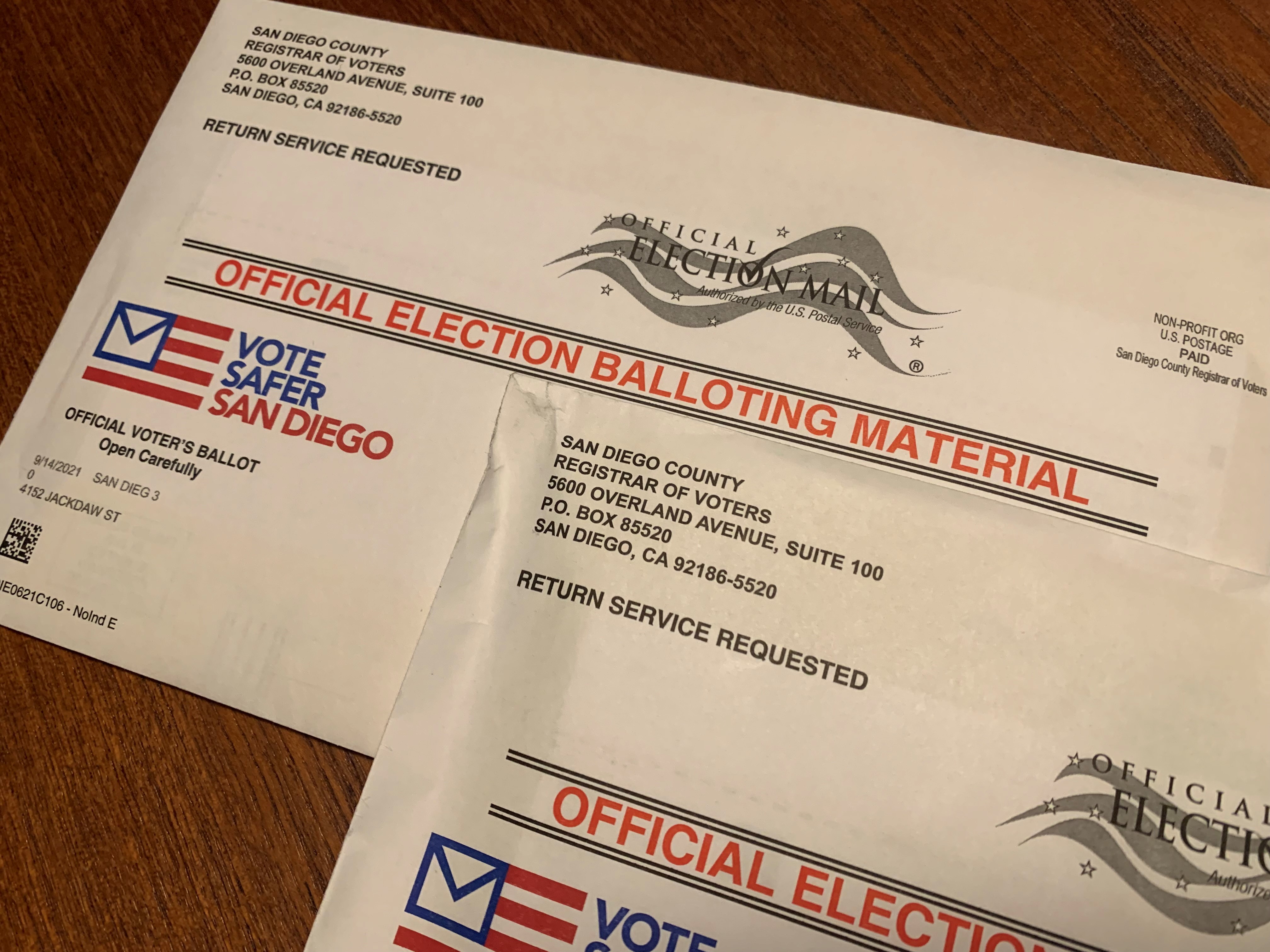Millions of California voters began receiving ballots by mail this week with two questions that will determine who will finish out Gov. Gavin Newsom's term in office.
The ballots ask voters whether the governor should be recalled and, if he is recalled, who should replace him. It’s the endgame in a slow-moving process required to mount what would be only the second successful gubernatorial recall in California history.
Below, we’ve put together a voting guide for the recall election.
Get top local stories in San Diego delivered to you every morning. >Sign up for NBC San Diego's News Headlines newsletter.
What's the date for the recall election?
There are three important dates to remember.
- Aug. 16: First day to vote by mail.
- Aug. 30: Last day to register to vote. You can “conditionally” register and vote at your county elections office or polling location after the voter registration deadline, up to and including Election Day.
- Sept. 14: Election Day. Polls are open 7 a.m. to 8 p.m.
What’s required to vote in the recall election?
In that regard, it’s just like any other election — you’ll need to be registered. Eligible voters can do that here. Not sure whether you’re registered? Click here to check your registration status.
To register to vote in California, you must be:
- A United States citizen and a resident of California.
- 18 years old or older on Election Day.
- Not currently serving a state or federal prison term for the conviction of a felony. (for more information on the rights of people who have been incarcerated, please see the Secretary of State's Voting Rights: Persons with a Criminal History).
- Not currently found mentally incompetent to vote by a court (for more information, please see Voting Rights: Persons Subject to Conservatorship).
Can I register to vote on Election Day?
Yes, Same-day voter registration is available in California. It's called Conditional Voter Registration and allows Californians who miss the deadline to register to vote or update their voter registration information for an election. It means your ballot will be processed and counted once the county elections office has completed the voter registration verification process.
What if I just moved?
If you already updated your address with the Department of Motor Vehicles or US Postal Service, your registration will automatically update. If not, click here to register.
What am I voting on?
The recall process allows voters to decide whether to remove elected public officials from office before their term is over. California is one of 19 states that allows any elected official to be recalled from office, which last happened in the governor's office in 2003.
The ballot will ask voters two questions.
- Do you want to recall the governor?
- If recalled, who do you want to replace him?
Voters can vote on either one or both parts of the recall ballot. If more than 50% of voters vote to recall Gov. Newsom, then the replacement candidate with the most votes would be elected.
A replacement for a recalled governor serves out the remainder of the governor's term. Newsom's current term, his first, ends in January 2023 after the governor's office is contested in the November 2022 election.
Who’s on the ballot?
If you were in California for the last gubernatorial recall election in 2003, you might remember that Arnold Schwarzenegger was one of 135 candidates in that race. This time, voters still face a lot of choices if the recall is successful. Here’s the complete certified list of candidates from the California Secretary of State.
How did we get here?
That’s a long story, one for a separate article. Click here to read our California recall FAQ and about how the process works.
How can I vote?
Just like last fall, every active registered voter in California will have the option of voting by mail. Ballots will be mailed by county elections departments 29 days before the election — so, in mid-August.
San Diego County residents can expect to receive them as early as Aug. 16.
Voters can return those ballots by mail, drop them off at one of the 131 designated drop-boxes in San Diego County or drop them off at polling places before they close at 8 p.m. on Sept. 14.
If you are mailing in your ballot, it must be postmarked on or before Election Day and received by county elections officials no later than seven days after Election Day.
In-person voting is also an option (see below).
What if I didn’t receive my ballot?
Every county elections department is required to provide a means to track and confirm receipt of ballots. Click here to check on your ballot if you're a registered active voter and did not receive on. You can sign up here to receive ballot notifications.
Can I track my ballot after I send it?
Yes. Voters who return their mail ballot through the U.S. Postal Service can track it by signing up online for “Where's My Ballot?” California also uses the BallotTrax tool.
Where are early voting and ballot drop-off locations?
Early voting is already underway in some parts of California, including in San Diego County. The Secretary of State also offers a tool to help you find early voting and ballot drop-off locations near you. Or, use the county's interactive tool to find the location closest to you.
Click the link below for what you need to know about voting early and in person.
In addition to mail ballots, 221 in-person voting locations will be open across San Diego County for four days -- Sept. 11-13 -- from 8 a.m. to 5 p.m. All locations will also be open on Election Day, Sept. 14, when the hours change to 7 a.m. to 8 p.m.
One of those in-person polling places is already open; the County Registrar’s Office will be open from 8 a.m. to 5 p.m. Monday through Friday leading up to Election Day when voting hours are extended.
When are polls open for in-person voting on Election Day?
Polling places will be open from 7 a.m. to 8 p.m. on Sept. 14. If you're in line before 8 p.m., you can vote.
How do I find my polling place?
Click here find your polling place.
What if my name isn’t on the official polling place list?
Voters who believe they've registered, but arrive at a polling place only to find they're not on the official voter registration list can cast a provisional ballot. The same is true for vote-by-mail voters who did not receive a ballot or forgot to bring it to the polling place. Provisional ballots go into a special envelope, and they're counted after it's confirmed that you're registered to vote.
Find out how to check your provisional vote's status here.
What if I changed my name?
You'll need to re-register. Ideally, you'd first update your California driver's license or ID with the DMV.
Something just didn’t seem right. What should I do?
Do you know about California's Voter Bill of Rights? If you feel like your right to vote was violated or any of those conditions were not met, you can contact the Secretary of State.
- Online: Click here
- Phone: 800-345-8683
- Email: elections@sos.ca.gov



